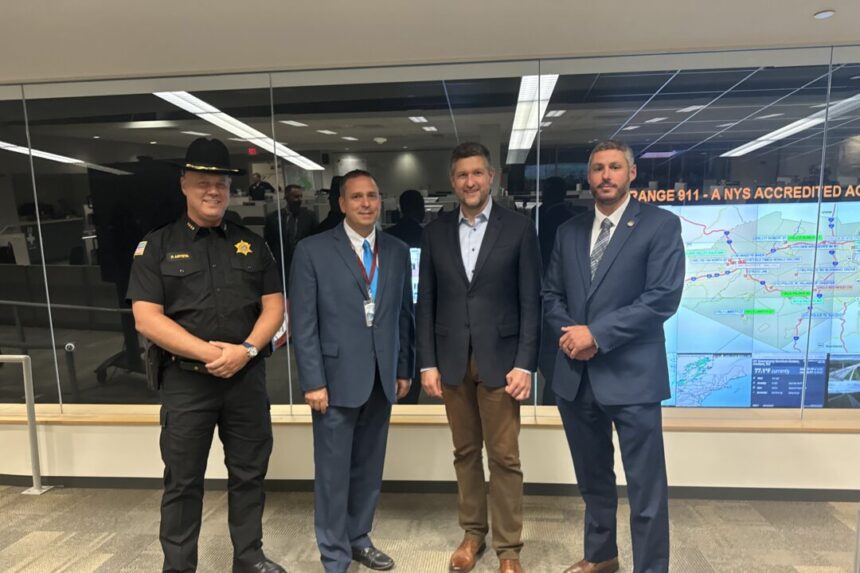Rep. Patrick Ryan (D-N.Y.) visited Goshen on Sept. 6 to showcase nearly $2 million in federal earmarks for enhancing the 911 center and jail operation in Orange County.
In addition to the Orange County projects, Ryan secured over $2 million for Dutchess County’s crime intelligence center and central radio system, and almost $2 million for Ulster County’s emergency operations center and sheriff’s office.
These two bills are pending further action by the full House and Senate.
“There are many reasons to feel disheartened these days, but we must always take a moment to share positive news about collaboration and effective governance at all levels,” said Ryan during a press conference at the Orange County 911 center.
Orange County Executive Steve Neuhaus stated, “Emergency management has always been a top priority. Modernizing the 911 center and adding new capabilities will enhance public protection.”
Over $1 million has been allocated for a real-time intelligence center in the county’s emergency services building, including an upgraded display wall for live video feeds to enhance response capabilities.
County Emergency Services Commissioner Peter Cirigliano mentioned that the video sources will range from traffic cameras and drones to cameras in schools and critical infrastructure.
The remaining funds, nearly $800,000, will be used for purchasing 200 new body cameras for correctional officers at the county jail.
“Congressman Ryan’s funding will greatly assist our members,” said Orange County Sheriff Paul Arteta, emphasizing the importance of body cameras in evidence collection and transparency.
These bills are also awaiting further action by the House and Senate.
Federal earmarks, also known as community project funding, involve direct financial investments in local nonprofit initiatives at the request of congressional representatives.

Police dispatchers work inside the Orange County emergency services center in Goshen, N.Y., on Sept. 6, 2024. Cara Ding/The Epoch Times
These member funding requests are integrated into the annual budgets of relevant federal agencies and must collectively remain below 0.5 percent of federal discretionary spending, as per the House Appropriations Committee guidelines.
During the previous federal budget cycle, Congress allocated $16 billion for over 8,000 local projects, according to data from Taxpayers for Common Sense.
While the federal fiscal year starts on Oct. 1, lawmakers often do not pass all 12 spending bills by that date and may resort to continuing resolutions. In the previous budget cycle, federal appropriations were not finalized until March.
Please rephrase this sentence.
Source link








